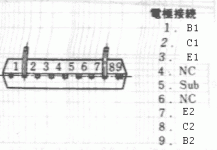I'm working on a Tandberg TPA-3026 and am having a hard time getting the offset stable. So I need to replace the diff pair ICs I think, they are uPA74V. The thread below shows some information on them and one post suggests replacing them with discrete transistors. I've done this many times in similar cases. But there is one extra pin here. It is labelled "sub" in the datasheet. Does anyone know what it does? I tried replacing the part without connecting that pin and the amp just goes DC. The pin seems to connect to ground.
The schematic doesn't show it, it just shows the IC as 2 NPN transistors.
https://www.diyaudio.com/community/threads/upa75v-and-upa74v-data.67817/
Full schematic here https://elektrotanya.com/tandberg_tpa-3026a_audiophile_pa_1986_sch.pdf/download.html
The schematic doesn't show it, it just shows the IC as 2 NPN transistors.
https://www.diyaudio.com/community/threads/upa75v-and-upa74v-data.67817/
Full schematic here https://elektrotanya.com/tandberg_tpa-3026a_audiophile_pa_1986_sch.pdf/download.html
Attachments
"Sub" is the substrate of the semiconductor wafer that the circuit is built upon, and is often connected to the most negative rail.
For example, in an LM7805 positive 5v regulator, TO220 package, the substrate is attached to the metal tab and the centre pin, which is ground.
In an LM7905 negative 5v regulator, TO220 package, the substrate is attached to the metal tab but in this case the metal tab and the centre pin is the negative input.
This is the reason that negative and positive regulators have different pinouts.
It probably doesn't have to be connected, so long as it can never be more positive than any other pin.
For example, in an LM7805 positive 5v regulator, TO220 package, the substrate is attached to the metal tab and the centre pin, which is ground.
In an LM7905 negative 5v regulator, TO220 package, the substrate is attached to the metal tab but in this case the metal tab and the centre pin is the negative input.
This is the reason that negative and positive regulators have different pinouts.
It probably doesn't have to be connected, so long as it can never be more positive than any other pin.
Thanks! Good to know that.
It does seem to work now. I just forgot this one channel really doesn't like the dim bulb tester.
It does seem to work now. I just forgot this one channel really doesn't like the dim bulb tester.

